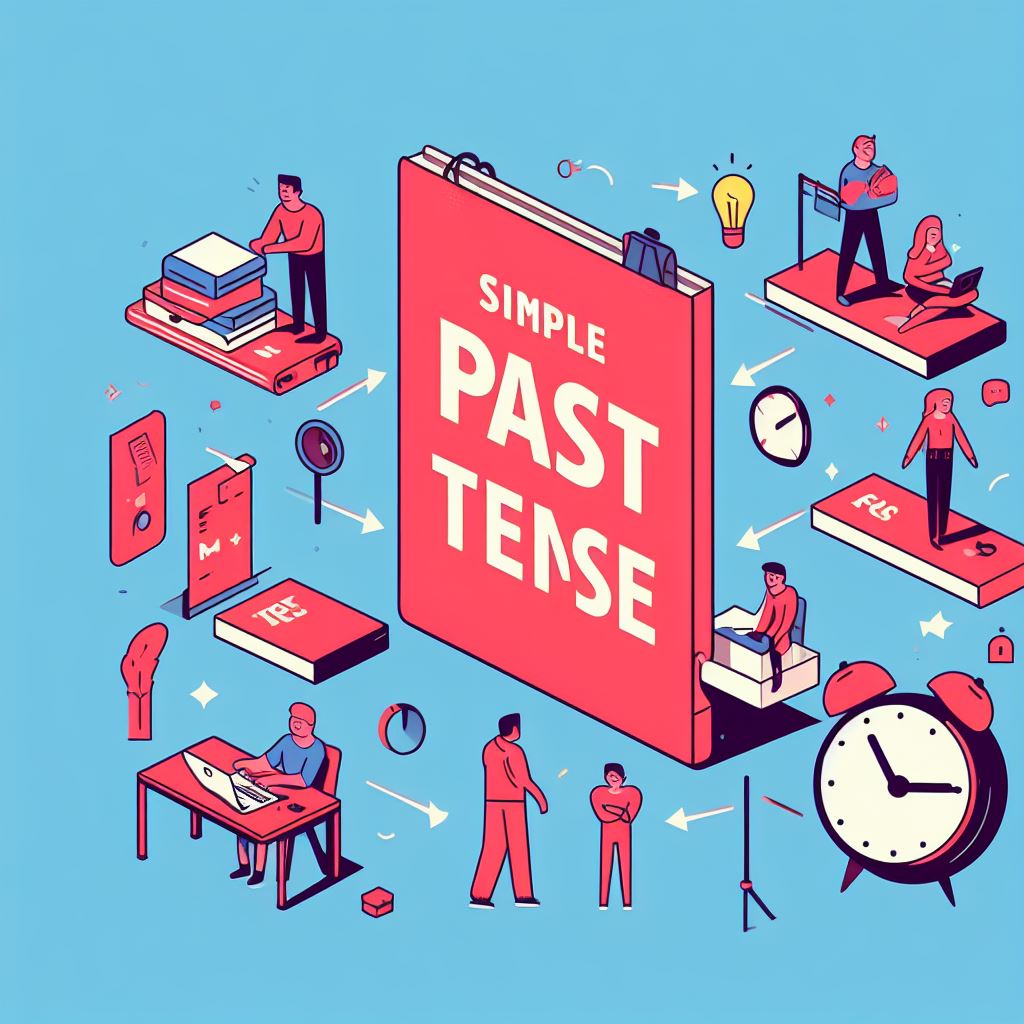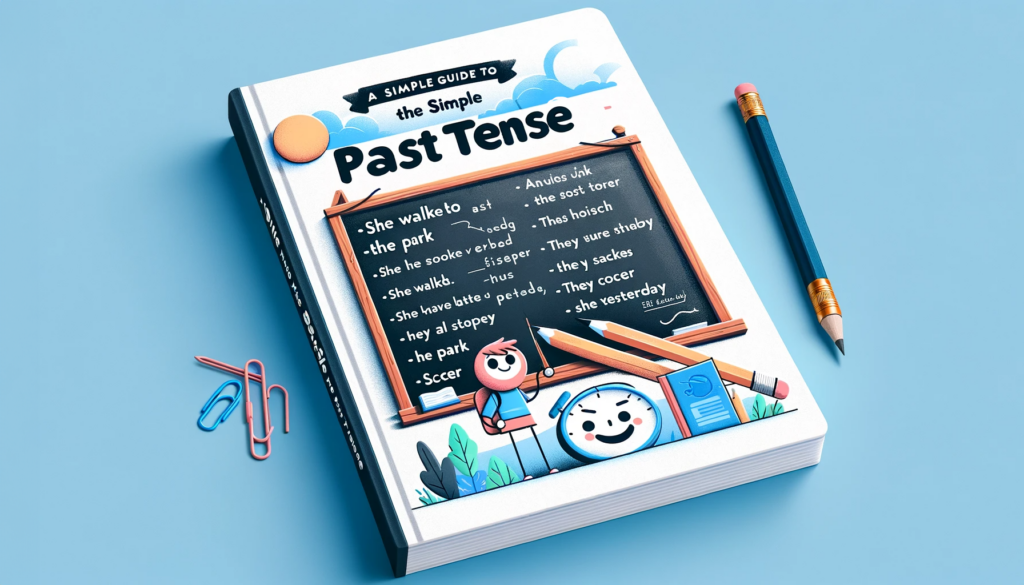A Simple Guide to the Simple Past Tense (Verb)

Hello, language enthusiasts! Welcome back to Vocaburger.com, where we make grammar as fun and tasty as a gourmet burger! Today, we’re time traveling to the world of the simple past tense, a crucial ingredient in your English language recipe.

Understanding the Simple Past Tense:
The simple past tense is like a snapshot of something that happened before now. It’s used to describe actions that were completed at a specific time in the past. Think of it as telling a story about what you did yesterday or last year.
Here is a game for you to practice:
Forming Sentences in Simple Past Tense:
Here’s a breakdown of how to form sentences in the simple past tense:
Regular verbs (e.g., “talk,” “walk,” “play”):
- Positive sentence: Subject + past tense verb + (rest of the sentence).
Example: She talked to her friend yesterday. - Negative sentence: Subject + did not (didn’t) + base form of the verb + (rest of the sentence).
Example: They didn’t walk to school last week. - Question: Did + subject + base form of the verb + (rest of the sentence)?
Example: Did you play soccer yesterday?
Irregular verbs (e.g., “go,” “eat,” “drink”):
- Irregular verbs have unique past tense forms, so you’ll need to learn them individually. Here are some examples:
- go (base form) → went (past tense)
- eat (base form) → ate (past tense)
- drink (base form) → drank (past tense)
- Positive sentence: Subject + past tense form of the irregular verb + (rest of the sentence).
Example: He went to the store yesterday. - Negative sentence: Subject + did not (didn’t) + base form of the irregular verb + (rest of the sentence).
Example: She didn’t eat pizza last night. - Question: Did + subject + base form of the irregular verb + (rest of the sentence)?
Example: Did they drink coffee this morning?
Here’s a table illustrating the structure of simple past tense sentences in English, where “S” stands for Subject, “V” stands for Verb in the, and “O” stands for Object:
| Subject (S) | Verb in Simple Past (V) | Object (O) |
|---|---|---|
| I | ate | pizza. |
| She | watched | a movie. |
| They | played | soccer. |
| He | visited | the museum. |
| We | studied | English. |
| You | read | a book. |
In these sentences, the subject (S) performed actions or had things done in the past (the verb, V), and the object (O) is related to the action. This table shows the basic structure of simple past tense sentences. You can create more complex sentences by adding more details and information as needed.
To make a negative sentence, just add ‘did not’ (or ‘didn’t’) before the base form of the verb, like “I didn’t eat”. For questions, start with ‘did’ and follow with the subject: “Did you see that movie?”
Regular and Irregular verbs
Most verbs in the simple past tense are ‘regular’ and end with -ed, like ‘walked’ or ‘talked’. Easy-peasy! However, some verbs are the pickles of grammar – the ‘irregular’ ones. These verbs don’t follow a specific pattern. For example, ‘go’ becomes ‘went’, and ‘see’ turns into ‘saw’.
| Base Verb | V2 | Regular/Irregular |
|---|---|---|
| walk | walked | Regular |
| talk | talked | Regular |
| play | played | Regular |
| clean | cleaned | Regular |
| jump | jumped | Regular |
| be | was/were | Irregular |
| have | had | Irregular |
| go | went | Irregular |
| eat | ate | Irregular |
| write | wrote | Irregular |
This table shows how regular verbs in the simple past tense typically add “-ed” to the base form. In contrast, irregular verbs change in a variety of ways and need to be memorized as there is no single rule for all of them.
Conclusion: And there you have it – the simple past tense in a nutshell. Remember, practice makes perfect. Try creating your own sentences or rewriting a part of your day using the simple past tense. Keep following Vocaburger.com for more tasty grammar tips!



0 Comments